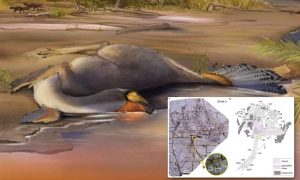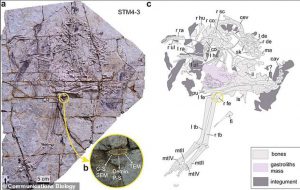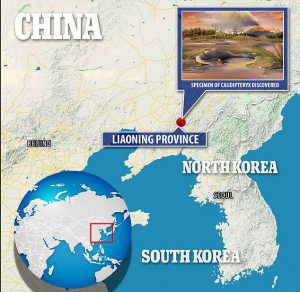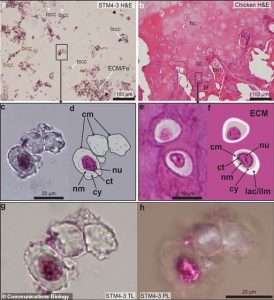SEPTEMBER 25, 2021

Scientists from China say they have isolated ‘exquisitely preserved’ cartilage cells of a 125-million-year-old dinosaur that contains organic molecules and may suggest that dinosaur DNA could one day be found.
Researchers from the Institute of Vertebrate Paleontology and Paleoanthropology (IVPP) of the Chinese Academy of Sciences and from the Shandong Tianyu Museum of Nature found the nuclei which contains organic components and ‘fossilized threads of chromatin’ in the cartilage of Caudipteryx, a dinosaur roughly the size of a peacock.

In addition to the chromatin, the researchers found two types of cells in the cartilage: healthy cells and those in the process of dying when the animal itself died.
The authors note that preserved cell nuclei in extinct organisms such as dinosaurs is ‘currently considered rare and exceptional,’ but there have been previous examples of it being found.
These include certain mammals, dinosaurs from the Mesozoic era, as well as plants that are more than 600 million years old.
‘Recent taphonomy experiments on plants and algae have shown that nuclei are surprisingly stable and that nuclear decay is much slower than originally thought in some conditions,’ they wrote in the study.

It’s likely that the cells were ‘exquisitely preserved’ by the silicon dioxide from volcanic ash that covered the carcass.
‘It is possible that these cells were already dying even before the animal died,’ said Alida Bailleul, IVPP associate Professor and study co-author in a statement.

Caudipteryx, about the size of a peacock, lived on the shores of Jehol Biota lake in Liaoning province during the Early Cretaceous period.
It was capable of reaching speeds of 17mph according to a 2019 study and learned to fly by accident. The first specimen was discovered in China in 1997.
The researchers took cells from the cartilage and stained them with a purple chemical known as hematoxylin.
After doing so, they saw a nucleus with darker purple threads, indicating it retained some original organic molecules and chromatin.

The cartilage, which came from the right femur of the dinosaur, was analyzed via a number of different chemical methods, along with the cartilage of a chicken for comparison.
‘The two specimens reacted identically, and one dinosaur chondrocyte revealed a nucleus with fossilized threads of chromatin,’ the researchers wrote.
‘This is the second example of fossilized chromatin threads in a vertebrate material.
‘These data show that some of the original nuclear biochemistry is preserved in this dinosaur cartilage material and further support the hypothesis that cartilage is very prone to nuclear fossilization and a perfect candidate to further understand DNA preservation in deep time.’
The cells had been mineralized by silification from the volcanic ash after the animal died, which allowed for it be preserved in such an incredible state.
‘Geological data has accumulated over the years and shown that fossil preservation in the Jehol Biota was exceptional due to fine volcanic ashes that entombed the carcasses and preserved them down to the cellular level,’ said one of the study’s co-authors, LI Zhiheng, Associate Professor at IVPP, in a statement.
More work needs to be done to see if any original DNA from the dinosaur is preserved, but it’s not completely out of the question, Bailleul said.
‘Let’s be honest, we are obviously interested in fossilized cell nuclei because this is where most of the DNA should be if DNA was preserved,’ Bailleul explained.
‘So, we have good preliminary data, very exciting data, but we are just starting to understand cellular biochemistry in very old fossils. At this point, we need to work more.’










































































































